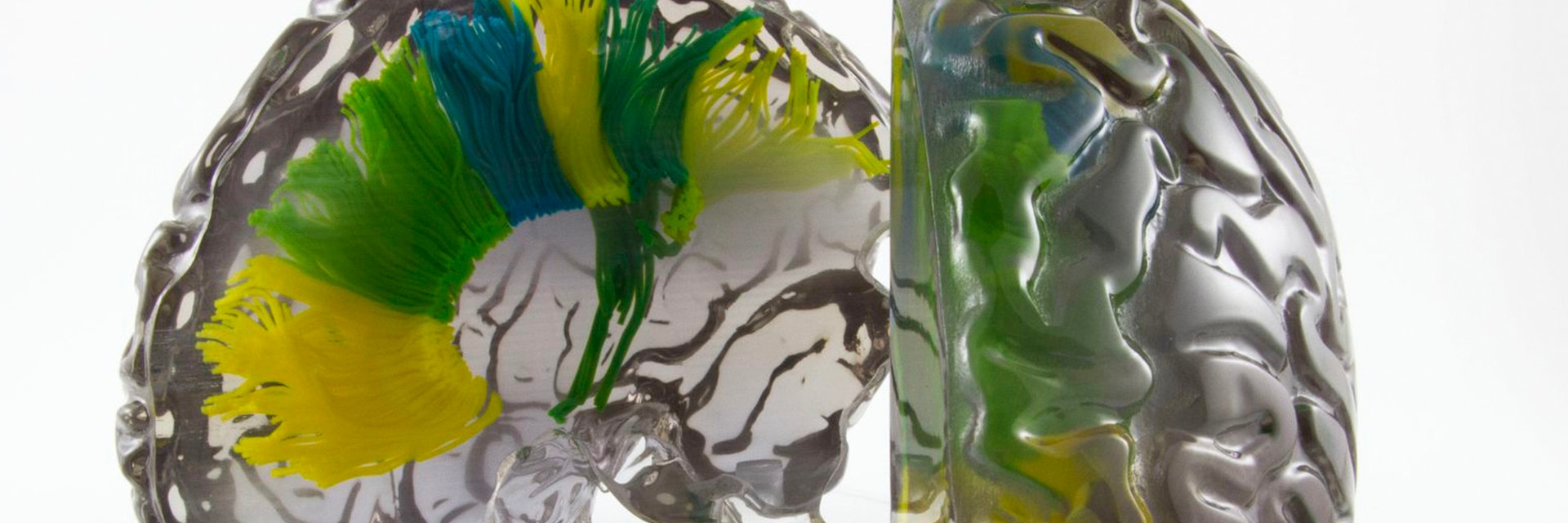EXPERT INSIGHT
30 Years of Innovation: Multiple Materials in One Print with PolyJet
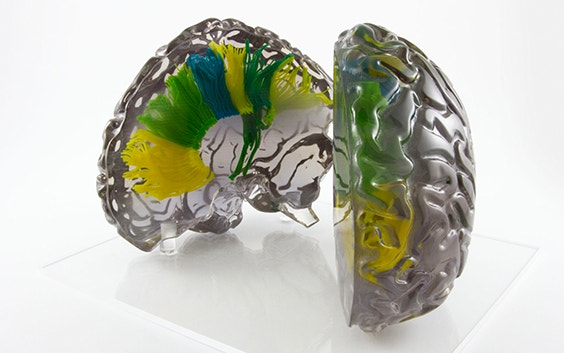
PolyJet technology has continued to evolve since it was first introduced in 2000, resulting in a wide range of applications from art to healthcare. Discover how its impressive capabilities and versatility mean PolyJet has a promising future in the 3D printing world.
In 2020, we celebrated Materialise’s 30th anniversary. Our 30 Years of Innovation blog series highlights some of the different 3D printing technologies that have helped our customers achieve their ambitions over the years and shows that there is no one-size-fits-all approach to 3D printing. This time, it’s the turn of PolyJet.
When PolyJet was first introduced in 2000, it gave a new spin to resin-based 3D printing — it was a technology that could print parts consisting of more than one material. This meant 3D-printed parts could have more complexity, embracing multiple textures from differing materials.
As the years went on, Materialise brought PolyJet into the company’s technology portfolio and the technology’s materials continued to develop, introducing additional color and transparency options that result in attractive, fun, and valuable applications.
Printing complex parts
PolyJet printers work by jetting photopolymer materials via cartridges onto a platform and immediately curing it with a UV light. The printer can connect to multiple cartridges, meaning a gel-like support and more than one material can be deposited at once, resulting in a complex part.
At Materialise, we have three different offerings for PolyJet: Vero, VeroClear, and composite materials. Vero provides a wide range of colors, VeroClear offers a transparent option, and the composite can consist of varying flexibility levels. Not only is each material customizable, users can also create parts that consist of multiple materials.
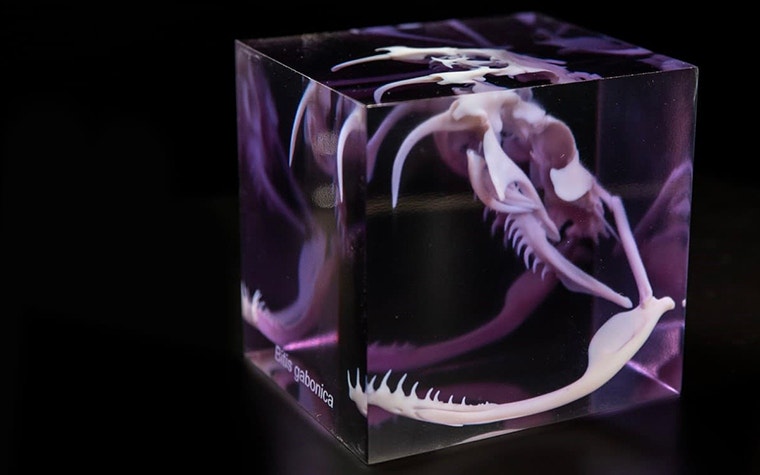

These characteristics make PolyJet a perfect fit for display pieces and prototypes. The huge range of hues as well as the transparent option suit colorful parts or can highlight significant areas in a print, as can be seen with snake skull above. These types of models provide educators with the opportunity to better explain various topics such as snake anatomy or enable artists to incorporate more depth into their pieces. The rubber-like possibilities with PolyJet also provide a great opportunity for manufacturers to test their rubber pieces, such as buttons or seals, with a 3D-printed piece.
“PolyJet enhances our portfolio not only because of its practical purposes, but also because it enables 3D printing users to add versatility to their designs.”
— Herwig Frans, Production Planner, Materialise
As the years have passed, the technology has been continuously fine-tuned to meet users’ needs — from increased color options to improved printers. These introductions gave the users more creative license and increased the possibilities for their prototypes and models.
Making a difference
As a technology fit for the creation of models, it naturally led the Materialise team to work with its medical unit and see how PolyJet can contribute to 3D-printed medical advancements. An example of this endeavor is HeartPrint. This 3D-printed heart model is printed using PolyJet because it enables a realistic, detailed result.
Thanks to expertise from both the medical and manufacturing teams, they realized that PolyJet was the perfect method to combine anatomical accuracy empowered by 3D printing’s freedom of design with the multicolor option to create a detailed, informative part. The result was HeartPrint, cardiac models that improve medical training and preoperative planning.
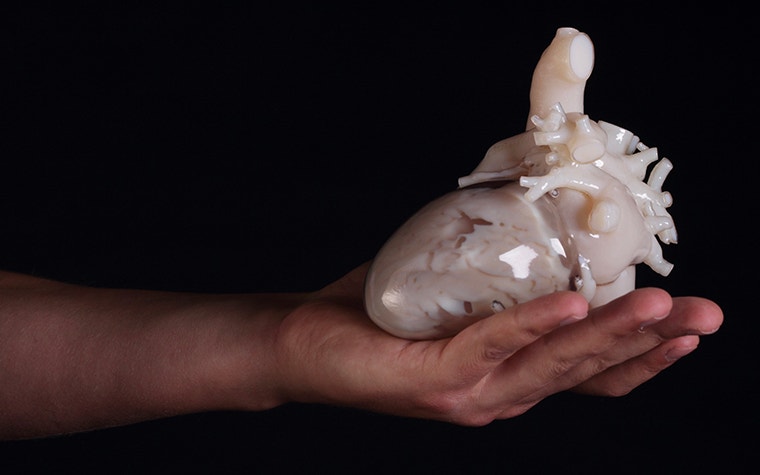

With these types of medical advancements in mind, Materialise teamed up with Stratasys in 2018 to receive FDA clearance for both the PolyJet technology and Materialise Mimics inPrint software, another step toward advancing point-of-care 3D printing in hospitals.
These technologies allow hospitals and doctors to better understand their patients’ anatomy and therefore enhance personalized medical care. The software converts 3D scans into highly accurate, virtual 3D anatomical models that can be printed with the benefits of PolyJet. And with FDA clearance, these medical professionals and their patients gain confidence in a certified process that produces high-quality models.
Strengthening our technology-neutral offering
At Materialise, we pride ourselves on a wide technology and material offering, so PolyJet was a natural fit into our portfolio. It’s often the perfect choice for artists and designers looking to add color or for automotive manufacturers testing their rubber concept pieces. With our decades of experience and various technologies, we have a deep understanding of which applications every technology works for and can work closely with customers to understand their needs and turn them to PolyJet when it’s the best option.
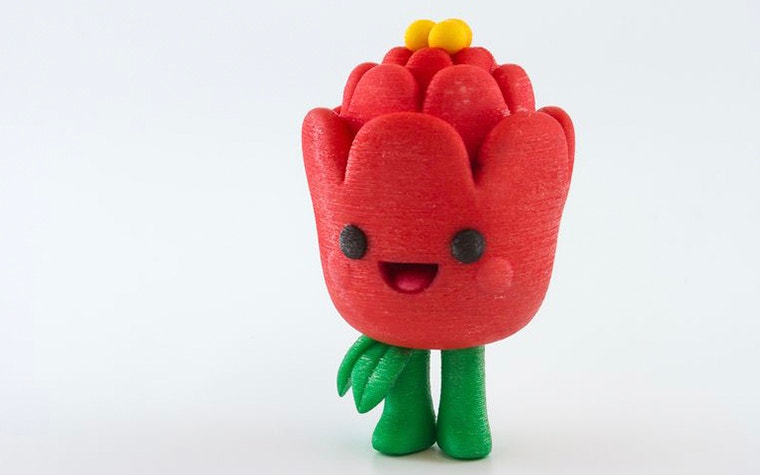

“PolyJet enhances our portfolio not only because of its practical purposes, but also because it enables 3D printing users to add versatility to their designs,” shares Herwig Frans, Production Planner at Materialise. “The multi-material capabilities provide customers with the opportunity to make unique parts that other 3D printing technologies can’t create in one piece.”
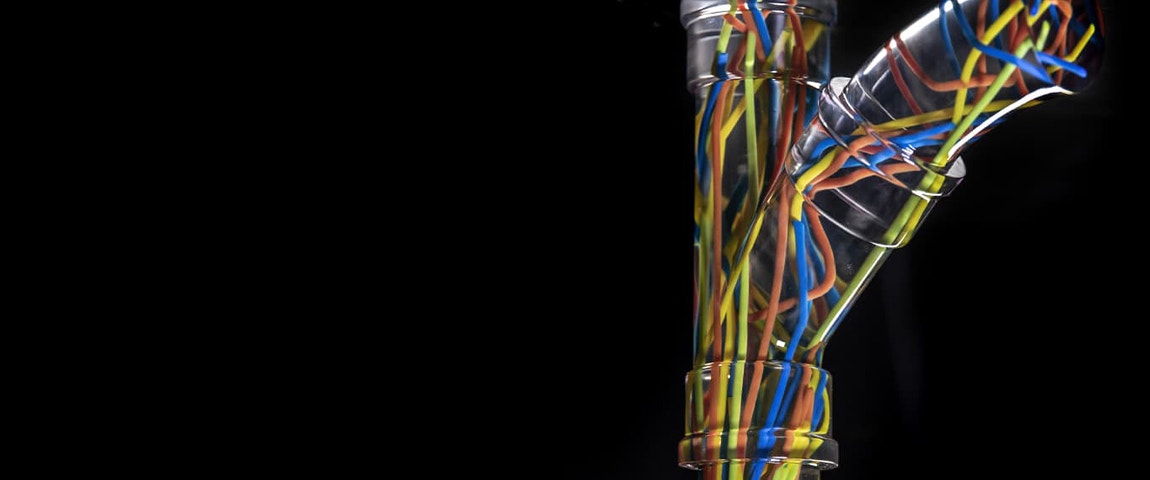
The Vero material allows users to choose their desired color and opacity.
PolyJet’s impressive capabilities mean it has a promising future in the 3D printing world, especially as personalized treatment becomes more and more prevalent. This unique technology has a solid spot in the industry, not only creating beautiful pieces but also enabling incredible advancements in healthcare.
Share on:
You might also like
Never miss a story like this. Get curated content delivered straight to your inbox.
